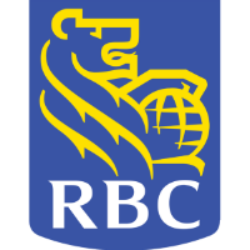The Federal Reserve's decisions on interest rates have wide-reaching effects, particularly on the demand for commodities. With Wells Fargo predicting potential rate cuts in the near future, the landscape for commodities might shift significantly. Let's explore how lower interest rates can spur demand for commodities and what this means for investors.
The Impact of Fed Rate Cuts on Commodity Markets
When the Federal Reserve cuts interest rates, it generally makes borrowing cheaper. This can encourage economic growth, increasing the demand for raw materials, including oil, metals, and agricultural products. Businesses may expand operations, and consumers might spend more, both of which can drive the need for commodities.
For investors, this shift presents an opportunity to gain insights into potential market movers. Tracking key data, such as trading activity and SEC filings, can help investors make informed decisions. FMP’s SEC Filings API is a valuable resource for accessing detailed company filings, which may shed light on how businesses are positioning themselves in response to interest rate changes.
Historical Precedents and Future Outlook
Historically, rate cuts have been linked to increased commodity demand. The 2008 financial crisis and the subsequent rate cuts led to a surge in commodity prices, particularly for gold and oil. Wells Fargo’s analysis suggests that a similar trend could emerge if the Fed lowers rates in the coming months.
For those looking to track real-time market movements, FMP’s Market Biggest Gainers API provides a snapshot of stocks and commodities that are experiencing significant gains, helping investors identify potential opportunities.
Factors Influencing Commodity Prices Beyond Rate Cuts
While interest rates play a key role, other factors such as geopolitical tensions, supply chain disruptions, and environmental regulations also affect commodity prices. For instance, the ongoing global push for clean energy has increased demand for metals like lithium and copper, essential for electric vehicles and renewable energy infrastructure.
Investors should therefore look at a broader range of economic indicators and market trends. Resources like FMP’s Commodities API provide valuable data on commodity prices, helping investors stay ahead of market changes.
Conclusion
The Federal Reserve's potential rate cuts are likely to create ripple effects across the commodity markets. As history shows, such moves can boost demand, providing growth opportunities for businesses and investors alike. However, savvy investors should combine interest rate insights with broader economic data to make well-informed decisions in this evolving landscape.
About NYSE: WFC
W
ells Fargo & Company, a diversified financial services company, provides banking, investment, mortgage, and consumer and commercial finance products and services in the United States and internationally. It operates through four segments: Consumer Banking and Lending; Commercial Banking;
Price: 74.34
Market cap: 247.5 billion USD
Eps: 4.81
P/e ratio: 15.46
Focus Analysis On: WFC
All news about: WFC
 Berkshire Hathaway
Profile, Qualitative, Financials ...
Overview
Berkshire Hathaway
Profile, Qualitative, Financials ...
Overview
 Royal Bank Of Canada
Fundamental Analysis
FA
Royal Bank Of Canada
Fundamental Analysis
FA
 Pfizer Inc.
Supply Analysis
Drugs, Devices, Recalls, Compliance ...
Pfizer Inc.
Supply Analysis
Drugs, Devices, Recalls, Compliance ...
 Amazon.com, Inc.
Risks/AI
NLP Analyzed Risk Factors, AI Arguments
Amazon.com, Inc.
Risks/AI
NLP Analyzed Risk Factors, AI Arguments
 The Boeing Company
M&A Deals
Deal Sizes, Dates, Security Type, S-4 ...
The Boeing Company
M&A Deals
Deal Sizes, Dates, Security Type, S-4 ...
 Adobe Inc.
Employee Analysis
VpE, Survey, Geographical Biding & Aqc.
Adobe Inc.
Employee Analysis
VpE, Survey, Geographical Biding & Aqc.



